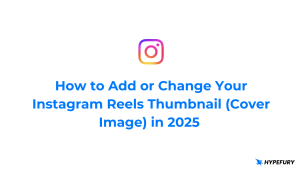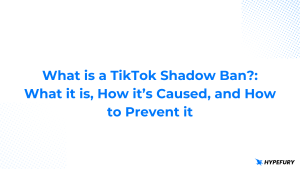Marketing on LinkedIn employs a strategy that helps you market your brand’s products and services by building your presence and visibility on the platform.
When developing a brand’s LinkedIn account, you must follow a LinkedIn marketing strategy to propel you into your industry, among your competitors. You do this by creating and distributing content, finding and engaging with your target audience, and building relationships with others in your industry.
You need to show people what your brand is and why they need it. These days, LinkedIn isn’t just for updating your CV – it’s a forum for building a captivated and engaged audience. With branding, you can create an image for your company or persona that’s memorable and persuasive.
Marketing with LinkedIn will help you stick to a plan with tangible endpoints.
- The evolution of marketing on LinkedIn
- How to market on LinkedIn
- Its importance for businesses
- Using Notion as a case study
The evolution of marketing on LinkedIn
LinkedIn was founded in 2003 by Reid Hoffman in his living room, with a mission to connect the world’s professionals to make them more productive and successful. They set out to create economic and professional opportunities for all members of the global workforce.
The platform began with a few thousand users in its first year, but by 2007 it had surpassed 10 million and it began to take useful shape. Currently, LinkedIn now has more than 875 million members with over 58 million registered companies. and 260 million of those are active every month.
How have things evolved?
Advertising was first seen on LinkedIn in 2005 and experts have since begun to take advantage of LinkedIn’s potential.
Each one of these developments has made LinkedIn employ targeting options for their advertising which can be narrowed down specifically. It is also pretty easy to run A/B testing and check the results you get. This helps in complementing the platform’s growing membership and providing marketers with a bang for their buck.
This unique targeting has made LinkedIn among the top platforms to create and execute internet marketing strategies. Here are some of the types of advertisements you can use as well. The latter addition blew marketers away with its objective-based targeting, allowing us to choose things like lead generation or awareness for each campaign. Here are a few of them:
- Display Ads: these are similar advertisements to what you see on other social media platforms. They are effective and operate on a similar PPC basis to Google ads.
- Text-Only Ads: LinkedIn Text Ads were launched in 2008, allowing more targeted, scalable ads, and they usually appear in search results and sometimes in the center of relevant articles.
- Sponsored Content: Sponsored content entered the scene in 2013 and this feature allows you to boost all kinds of content formats on the platform.
The past few years of LinkedIn have been home to a lot of evolution and progress, these years have introduced website demographics, Matched Audiences, carousel ads, video ads, and Pages, it’s now a far cry from what it was. This consistent progressive updates and customer-focused development has allowed them to see impressive growth since 2003, and there’s reason to believe they’re far from over.
The content marketing and B2B industry leverage LinkedIn’s platform very strategically, 50% of B2B blog traffic comes from LinkedIn, and 91% of marketing executives list LinkedIn as the top place to find quality content. So from a content marketing perspective, LinkedIn is invaluable as the targeting and advertisement channels make it a powerful marketing tool.
How to market on LinkedIn
If you want your brand to succeed on LinkedIn, you need to create a unique strategy that follows consistent fundamental models. Here are a few due processes you should consider implementing in your brand’s strategy.
Optimize your company’s profile – Make sure your company profile is optimized with all the necessary sections which include a professional photo, a bio, a detailed summary, and links to your website showcasing your services. Having a dedicated page to post content specifically on your company will make you more likely to be found on the LinkedIn platform and build a unique audience.
Create original, useful posts – while it might be easier to create your brand’s content solely around the promotion of your brand’s services it won’t get you an engaged community. Instead, create posts that are useful, informative, and engaging.
Engage with posts – Replying to posts on LinkedIn is a great way to engage with your audience. It also helps you build relationships with potential customers and colleagues.
Use all available content formats
- Create visual posts – Many people look to social media for visual stimulation. If you want your posts to really stand out, make sure you include infographics and visual elements.
- Host a LinkedIn Live session – LinkedIn live is a great way to get to know your audience better. By hosting a live session, you can start great conversations and relate to your community in a more intimate manner.
- Host a LinkedIn Poll – Polls are another fun and interactive way to interact with your audience. You can host a poll on anything, but it’s best to keep it related to your brand and industry.
- Video – You can stand out by presenting your content in more interesting formats such as video and slideshows. It engages your audience and helps build more quality leads because of how memorable your content is. Moreover, these mediums give you a chance to show your personality and customers love a brand that they can personally relate to.
Be authentic- As with all other forms of marketing, it’s important to be authentic and genuinely interested in your community’s needs. You can’t expect to build an engaged audience if you don’t display a distinct personality that they can relate to. All in all, LinkedIn is a fantastic platform for businesses of all sizes and industries. By creating an engaging brand presence on LinkedIn, you can further your brand’s reach while also attracting new customers and talent to your company. Make sure to create a consistent content strategy, and you’ll be well on your way to building your brand on LinkedIn.
Its importance for businesses
LinkedIn is the world’s largest professional network.
With over 500 million users, it is the place for professionals to connect and network with colleagues, employers, and potential career paths. With all of these professionals actively using LinkedIn, there has never been a better time for brands to be on the network. By using LinkedIn, brands can increase their visibility among their target audience, build a tailored community and ultimately generate leads.
Specific visibility
The specific targeting of the LinkedIn advertisement makes it possible for companies’ content to be displayed in view of a specific kind of audience. The art of generating leads requires speaking consistently to a tailored audience. 79% of marketers see LinkedIn as a very good source of leads, with 43% of marketers saying they have sourced at least one customer from LinkedIn.
Building a professional community
LinkedIn is a hub for a specific kind of audience, industry professionals. The hyper specificity of the platform attracts a certain caliber of people to that brands can build a professional community and advertise their services to.
Reputation and portfolio building
The majority of LinkedIn marketing is content marketing so in the process of trying to get sales your brand is also building a portfolio documenting its services, testimonials, and reputation.
Sales and conversion
Hubspot found that LinkedIn is 277% more effective at generating leads than Facebook and Twitter. That’s how powerful this social platform is in comparison to others. Producing content around one’s brand especially consistently and strategically one way or the other converts to leads for your business.
Using Notion as a case study
The Notion page on LinkedIn has acquired about 300k followers due to its creativity and innovation in approaching its content strategy. At first glance, their page showcases the uniqueness and positive highlights of their business.
Concurrently, their page includes a section that talks about the specificity of their product even giving users an option to add it as a skill to their own LinkedIn profiles.
Their diverse posts cut across all the models we’ve discussed that businesses should possess when marketing on LinkedIn.
- This video displays the new Notion AI feature and how users would use it.
- Using images and graphics, they celebrated Valentine’s Day in a way that creatively highlights their brand.
- Finally, they also use their page to highlight their work culture by covering the days and wellness of two of their employees.
In conclusion, marketing on LinkedIn has evolved over the past decade and it’s important for brands and businesses to leverage on all the sections made available to them on the platform. LinkedIn is a fantastic platform for businesses of all sizes and industries. With its recent updates, it is now more accessible than ever before, making it a great option for businesses looking to expand their brand. By creating an engaging brand presence on LinkedIn, you can further your brand’s reach while also attracting new customers and talent to your company. Make sure to create a consistent content strategy, and you’ll be well on your way to building your brand on LinkedIn.







